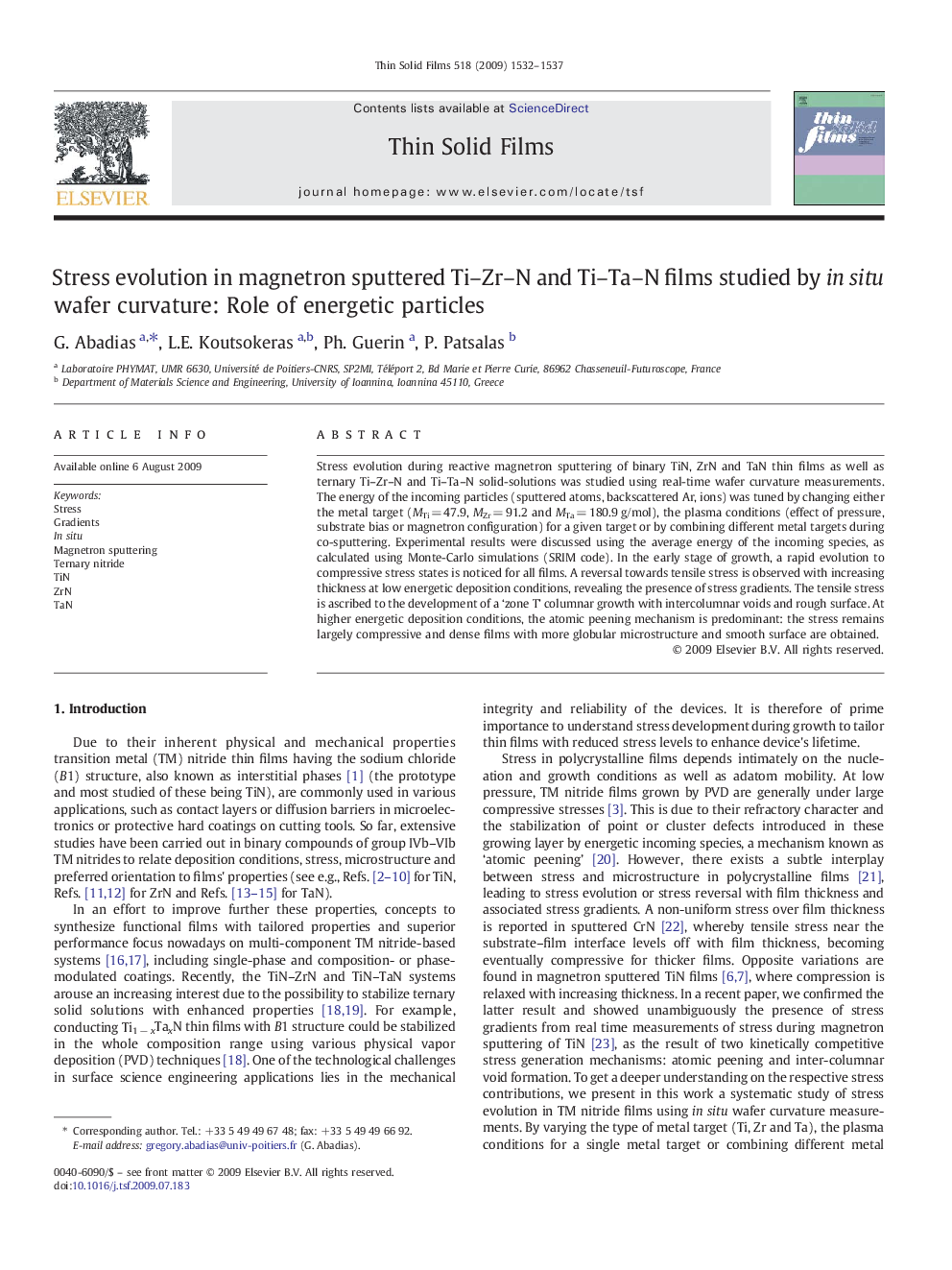| Article ID | Journal | Published Year | Pages | File Type |
|---|---|---|---|---|
| 1671878 | Thin Solid Films | 2009 | 6 Pages |
Stress evolution during reactive magnetron sputtering of binary TiN, ZrN and TaN thin films as well as ternary Ti–Zr–N and Ti–Ta–N solid-solutions was studied using real-time wafer curvature measurements. The energy of the incoming particles (sputtered atoms, backscattered Ar, ions) was tuned by changing either the metal target (MTi = 47.9, MZr = 91.2 and MTa = 180.9 g/mol), the plasma conditions (effect of pressure, substrate bias or magnetron configuration) for a given target or by combining different metal targets during co-sputtering. Experimental results were discussed using the average energy of the incoming species, as calculated using Monte-Carlo simulations (SRIM code). In the early stage of growth, a rapid evolution to compressive stress states is noticed for all films. A reversal towards tensile stress is observed with increasing thickness at low energetic deposition conditions, revealing the presence of stress gradients. The tensile stress is ascribed to the development of a ‘zone T’ columnar growth with intercolumnar voids and rough surface. At higher energetic deposition conditions, the atomic peening mechanism is predominant: the stress remains largely compressive and dense films with more globular microstructure and smooth surface are obtained.
